Making homemade cat food is a great way to improve your cat’s health and ensure they are getting the nutrition they need. By understanding your cat’s dietary needs and using high-quality ingredients, you can create a balanced and nutritious homemade diet for your feline friend. This guide will provide you with tips, recipes, and important considerations for making homemade cat food.
- Homemade cat food can improve your cat’s health and provide them with the necessary nutrition.
- Understanding your cat’s dietary needs is crucial when making homemade cat food.
- Choosing high-quality ingredients is essential for creating a balanced and nutritious diet.
- Avoid feeding carbohydrates such as corn, wheat, rice, and potatoes in homemade cat food.
- There are various homemade cat food recipes available that are recommended by experts.
Improving Your Cat’s Health with a Homemade Diet
Making the switch to a homemade cat food diet can have a significant impact on your feline friend’s health and well-being. By preparing their meals at home, you have full control over the quality of ingredients and can ensure they receive the essential nutrients they need.
When it comes to cat nutrition, balance is key. By carefully selecting high-quality ingredients and providing a variety of proteins, you can support your cat’s overall health and longevity. A homemade diet allows you to cater to your cat’s specific nutritional needs and address any dietary restrictions or sensitivities they may have.
Using fresh and nutritious ingredients, you can create a well-rounded diet that is tailored to your cat’s individual requirements. It’s important to include a mixture of lean meats, such as poultry or fish, to provide them with the necessary protein. Additionally, incorporating fruits and vegetables can offer added vitamins and minerals to support their immune system and promote healthy digestion.
Moreover, by avoiding preservatives, artificial flavors, and fillers commonly found in commercial cat food, you can protect your cat from potential health risks and ensure they receive a pure and wholesome meal. With a homemade diet, you have the peace of mind knowing exactly what goes into your cat’s food, promoting their overall well-being.
Remember to consult with your veterinarian to ensure your homemade cat food meets all nutritional requirements and to address any specific health concerns your cat may have. They can guide you in determining the appropriate portion sizes and offer additional advice to optimize your cat’s nutrition.
The Benefits of a Homemade Diet:
- Provides a balanced and nutritious meal
- Gives you control over the quality of ingredients
- Caters to your cat’s specific dietary needs
- Avoids additives, preservatives, and fillers
- Promotes overall health and longevity
Transitioning your cat to a homemade diet requires careful planning and consideration, but the rewards are undeniable. With a little effort and dedication, you can improve your cat’s health and well-being through the power of homemade cat food.
Next, we’ll explore choosing the right meat for your homemade cat food diet.
Choosing The Meat For Homemade Cat Food
When it comes to homemade cat food, the main ingredient you’ll need is raw or cooked meat. As carnivores, cats require a protein-based diet to thrive and stay healthy. Poultry, such as chicken or turkey, is generally well-accepted by cats and is a popular choice for homemade cat food recipes. However, it’s also worth considering other meats to add variety and ensure a well-rounded diet for your feline companion.
Here are some meat options you can try:
- Beef: Lean cuts of beef can provide essential nutrients for your cat.
- Lamb: Lamb is another protein-rich meat option that can be included in homemade cat food.
- Pork: High-quality, lean pork can be a good source of protein for your cat.
- Venison: If you’re looking for a unique protein source, venison can be a nutritious choice.
- Rabbit: Rabbit meat is low in fat and can be a good protein alternative for your cat.
- Ostrich: Ostrich meat is lean and packed with protein, making it a healthy option.
When selecting meat for homemade cat food, it’s crucial to choose fresh meat that is fit for human consumption. Quality is key to ensure your cat receives the necessary nutrients. Look for meat with a fat content between 8 and 15% as this range is considered ideal for feline diets.
Introducing a variety of meats into your cat’s homemade diet can provide different flavors and nutrients, keeping them engaged and satisfied. However, it’s important to note that some cats may have specific dietary needs or sensitivities. If your cat has any dietary restrictions or health conditions, it’s best to consult with a veterinarian to determine the most suitable meat options for their individual needs.
Things To Avoid When Making Cat Food At Home
When preparing homemade cat food, it’s crucial to be mindful of the ingredients you use. Cats have specific dietary requirements that differ from humans and dogs. Certain foods that are commonly found in our diets can be harmful to cats and should be avoided to ensure their health and well-being.
Avoid Carbohydrates
One of the key elements to avoid when making cat food at home is carbohydrates. Cats are obligate carnivores, which means they require a diet that is primarily meat-based. Carbohydrates such as corn, wheat, rice, and potatoes should not be included in their homemade diet. Cats have a limited ability to metabolize carbohydrates, and their digestive systems are not well-equipped to process these ingredients effectively.
Feeding carbohydrates to cats over an extended period can lead to various feline diseases and health issues. For instance, inflammatory bowel disease, allergies, struvite crystals, lower urinary tract infection, and obesity are some of the potential risks associated with including carbohydrates in a cat’s diet.
Instead of carbohydrates, focus on providing cats with a protein-rich diet that includes high-quality meat. This will ensure they receive the necessary nutrients and support their overall health.
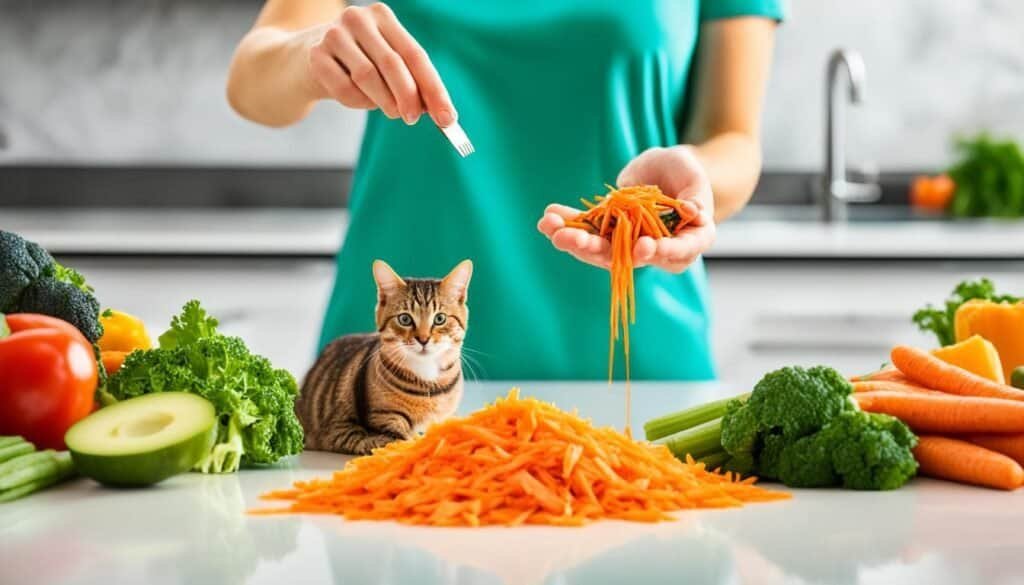
Other Ingredients to Avoid
In addition to carbohydrates, there are other ingredients that should be avoided when making homemade cat food. These include:
- Onions and garlic: These can be toxic to cats and cause anemia.
- Milk and dairy products: Most cats are lactose intolerant and can experience digestive issues if they consume dairy products.
- Raw fish: Raw fish may contain certain enzymes that can lead to thiamine deficiency in cats.
- Seasonings and spices: Cats have sensitive taste buds, and some seasonings and spices can be harmful to them.
By avoiding these ingredients, you can ensure that your homemade cat food is safe and beneficial for your feline companion.
Homemade Cat Food Recipes
Making homemade cat food is easier than you think. With a variety of recipes recommended by holistic veterinarians and pet nutrition experts, you can provide your feline friend with healthy and nutritious meals.
Whether you prefer using raw or cooked meat, these recipes are formulated to ensure that your cat receives all the essential nutrients they need. By making larger batches and freezing them for convenience, you can maintain a steady supply of homemade cat food.
Here are some healthy cat food recipes that you can try:
1. Homemade Wet Cat Food Recipe
This recipe combines high-quality proteins, such as chicken or fish, with vegetables and grains. It provides your cat with a balanced meal that is rich in essential nutrients. Simply mix the ingredients together, refrigerate, and serve. Your cat will love the taste and you’ll love knowing exactly what goes into their food.
2. Homemade Dry Cat Food Recipe
This recipe is perfect for cat owners who prefer a grain-free diet for their feline companions. It uses a combination of lean meats, such as turkey or rabbit, and healthy fats. The mixture is then dehydrated or baked to create a crunchy texture. This homemade dry cat food is both nutritious and delicious.
Remember to consult with your veterinarian or a pet nutritionist before introducing any new recipes into your cat’s diet. They can provide guidance on portion sizes and ensure that the homemade cat food meets all of your cat’s nutritional needs.
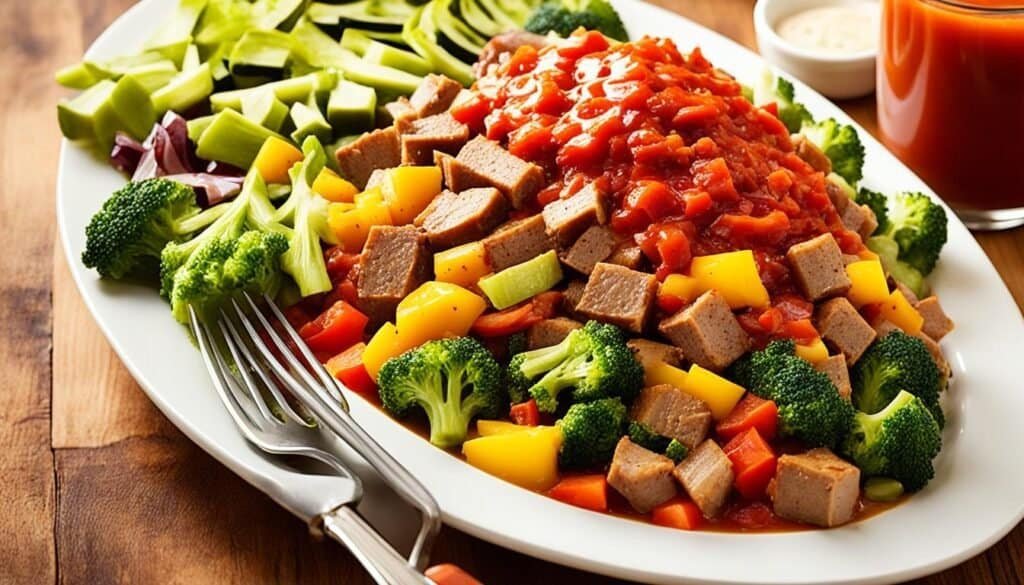
Providing your cat with homemade cat food is not just a way to show your love and care—it’s an opportunity to prioritize their health and well-being. By preparing their meals at home, you can ensure that your cat receives a balanced and wholesome diet.
Next, we’ll explore how to properly portion homemade cat food and the benefits of homemade cat treats.
How To Portion Homemade Cat Food
Properly portioning homemade cat food is crucial to ensure that your feline companion receives the right amount of nutrition. By understanding the appropriate serving sizes and storage methods, you can maintain your cat’s health and well-being.
Portion Guidelines
On average, adult cats require approximately 1/2 to 3/4 cup of homemade cat food per day. This amount can be split into two equal servings, preferably given in the morning and evening. However, it’s important to note that the exact portion may vary depending on your cat’s age, weight, activity level, and overall health. Consulting with your veterinarian will help you determine the specific dietary needs of your cat.
Storage and Thawing
Homemade cat food should be stored properly to maintain freshness and prevent spoilage. It’s recommended to refrigerate the food in an airtight container for up to three to five days. For longer shelf life, you can freeze the cat food in individual portions. Remember to label each container with the date to monitor its freshness. When thawing frozen cat food, transfer it to the refrigerator and allow it to defrost naturally. Avoid using the microwave or hot water as these methods may alter the texture and temperature of the food.
Portioning Homemade Cat Treats
In addition to homemade cat food, you can also prepare delicious and nutritious treats for your furry friend. Homemade cat treats can be portioned and used as occasional rewards or special incentives. It’s essential to ensure that the treats are properly balanced and made with cat-friendly ingredients. Just like homemade cat food, portioning treats will help you avoid overfeeding and maintain a healthy diet for your cat.
Conclusion
Feeding your cat homemade cat food can be a rewarding and beneficial choice for their overall health and well-being. By making the effort to prepare their meals at home, you have the ability to control the ingredients and ensure that they are consuming a natural and nutritious diet.
However, it is crucial to approach DIY cat food with caution and careful consideration. Before embarking on this journey, it is important to conduct thorough research and consult with veterinary experts who can guide you in creating a balanced and complete diet. Cats have specific dietary requirements, and it is essential to meet these needs to avoid any potential health risks.
Keep in mind that not all homemade cat food recipes are equal. It is important to follow recipes that have been formulated by holistic veterinarians and pet nutrition experts, ensuring that your cat’s nutritional needs are met. Additionally, consider the potential risks associated with homemade diets, such as the risk of nutrient deficiencies or imbalances, which can have a negative impact on your cat’s health.
In conclusion, while homemade cat food can provide numerous benefits and the satisfaction of knowing exactly what your cat is eating, it is crucial to approach it with care. Educate yourself, consult with professionals, and prioritize the health and nutritional needs of your cat. With the right knowledge and attention to detail, homemade cat food can be a natural and nourishing choice for your feline companion.
FAQ
Why should I make homemade cat food?
Can I use raw meat for homemade cat food?
Why should I avoid feeding carbohydrates to my cat?
How can I find homemade cat food recipes?
How much homemade cat food should I feed my cat?
Are homemade cat treats a good idea?
Is homemade cat food suitable for all cats?
Last modified: February 26, 2024

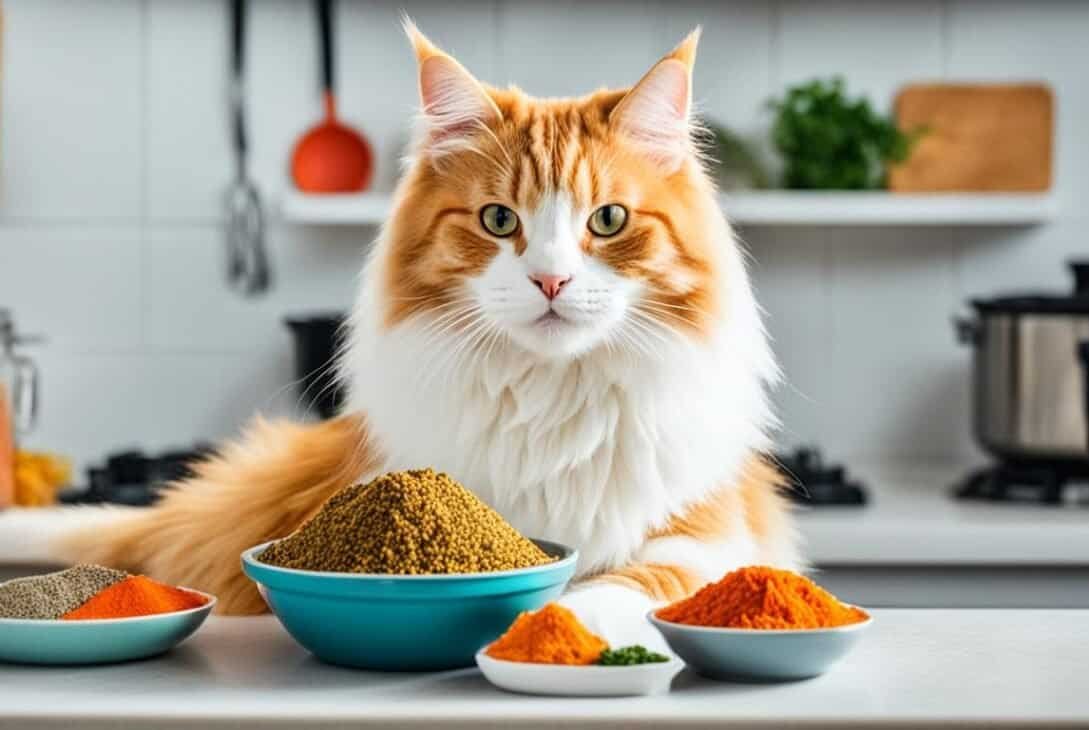
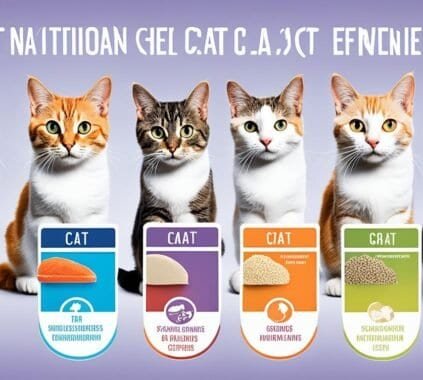
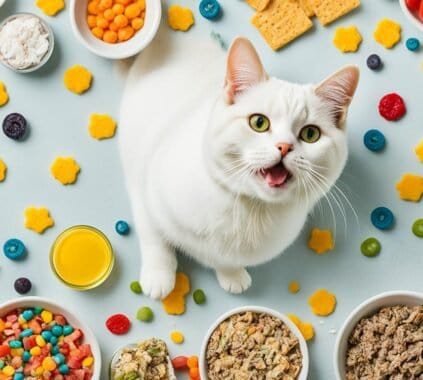
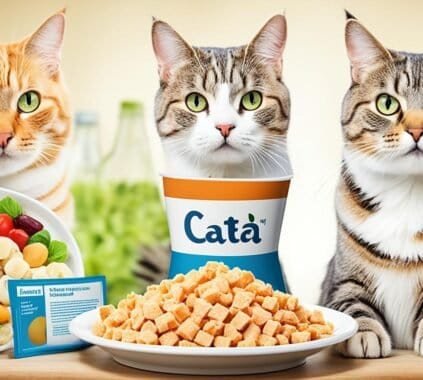
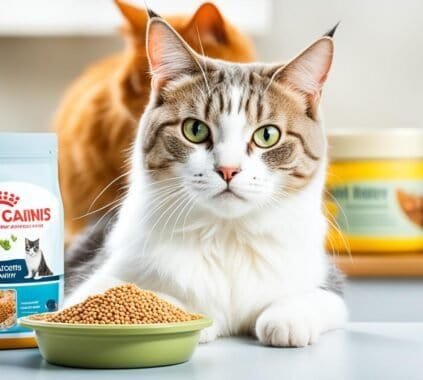
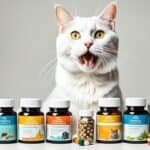







My brother recommended I might like this web site. He was totally right. This post actually made my day. You cann’t imagine just how much time I had spent for this information! Thanks!
[…] care for her furry friend. That’s why she always made sure to research and choose the right cat food for […]